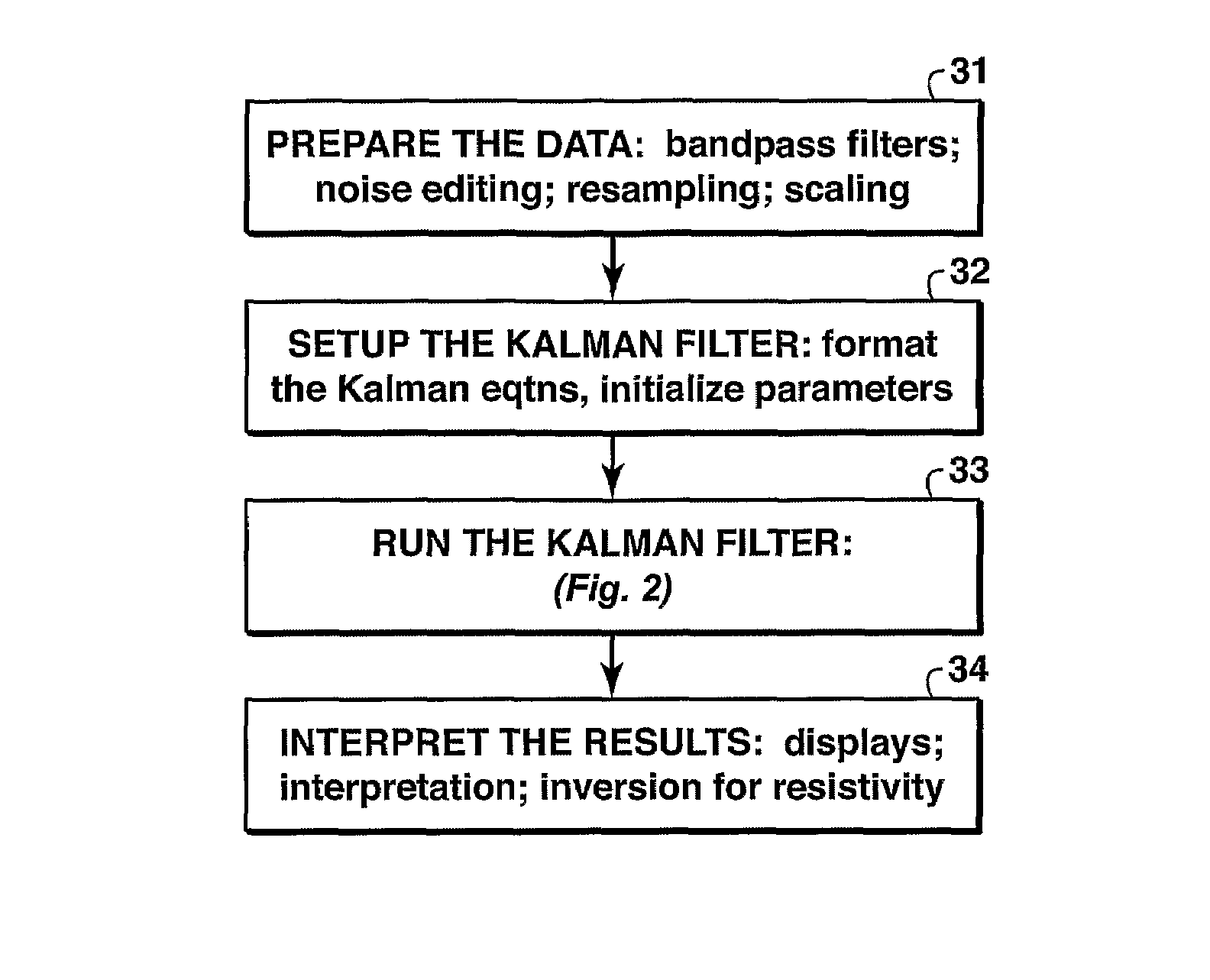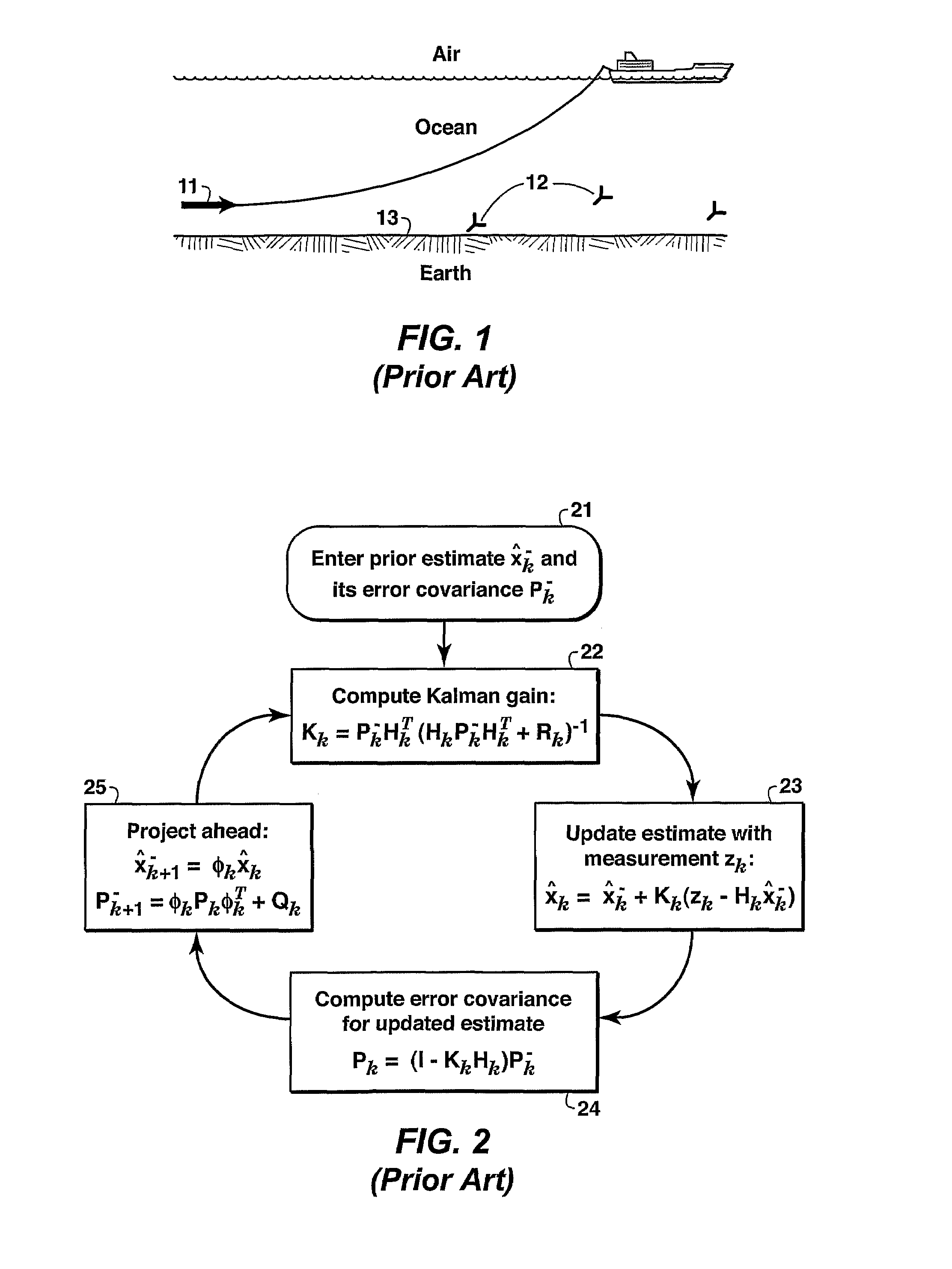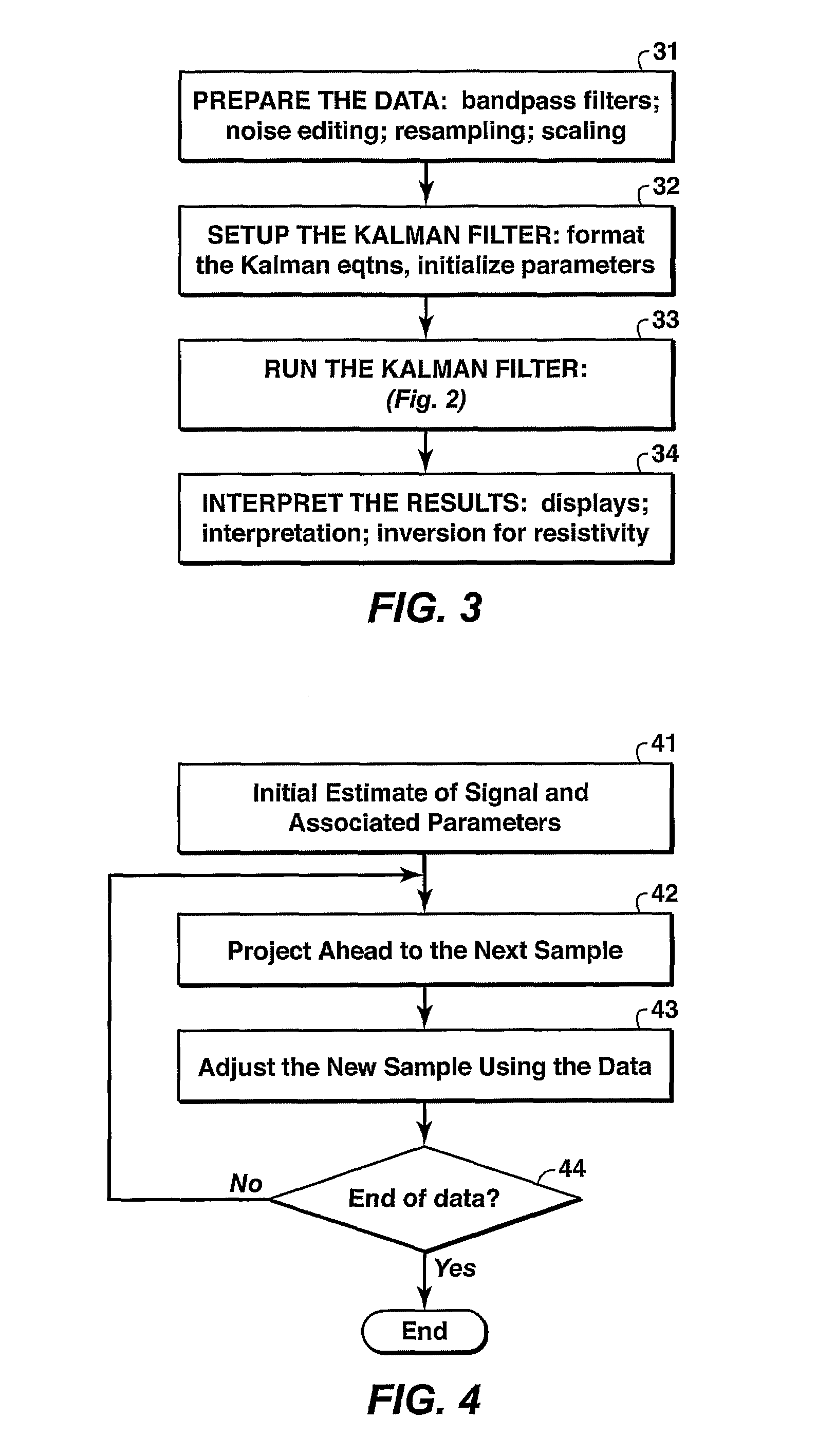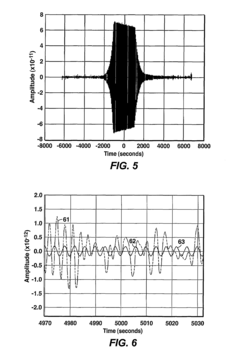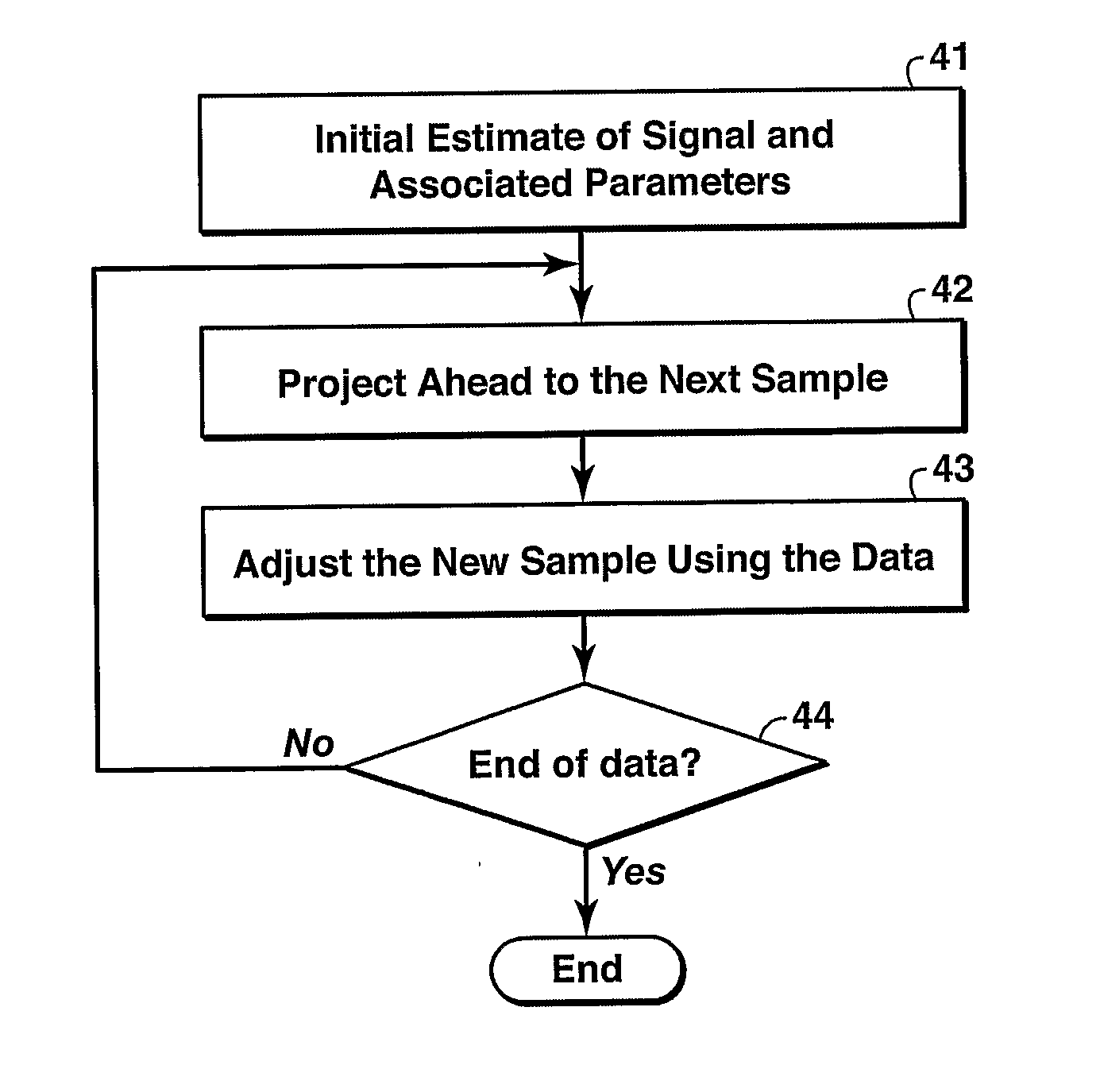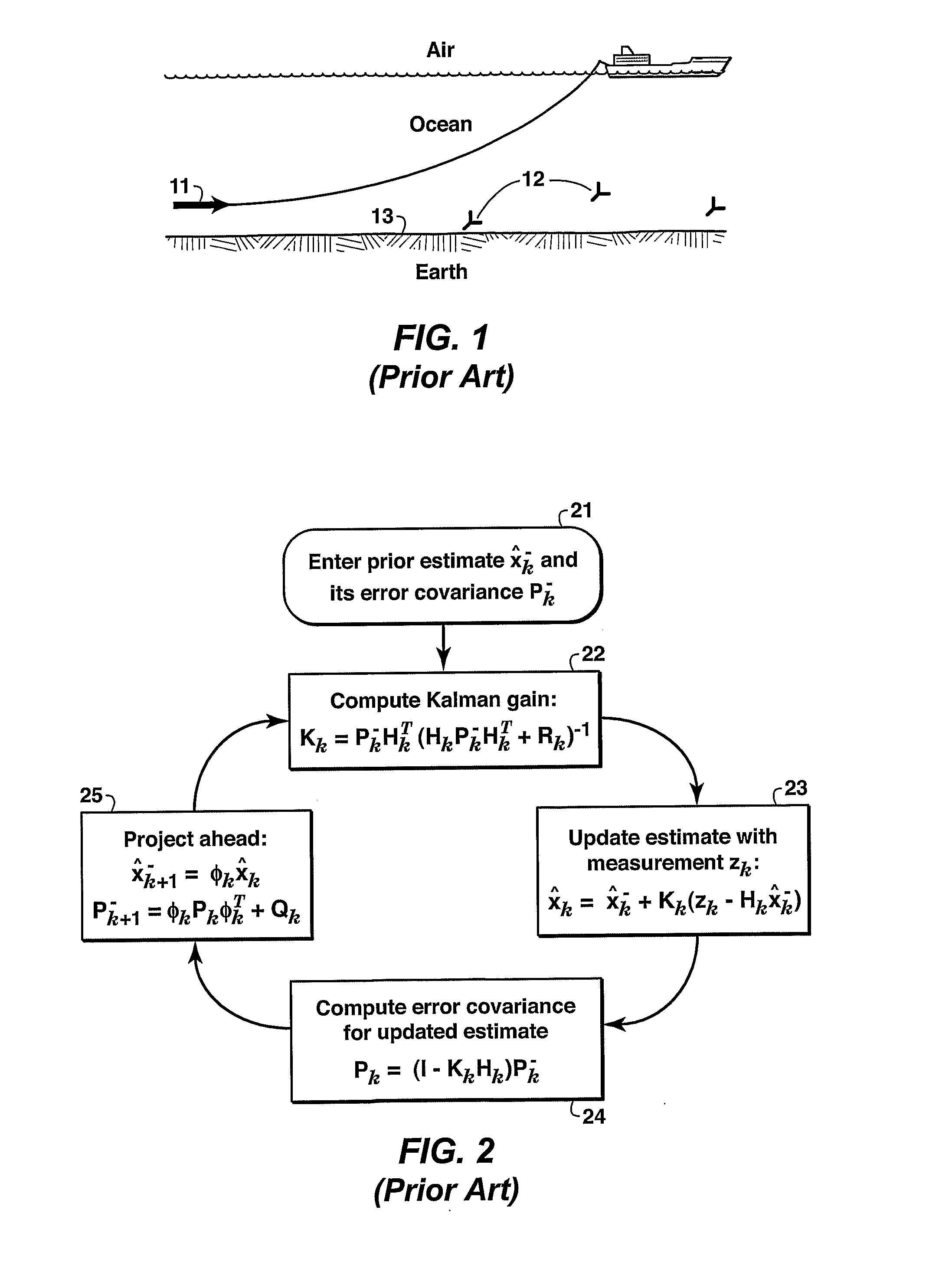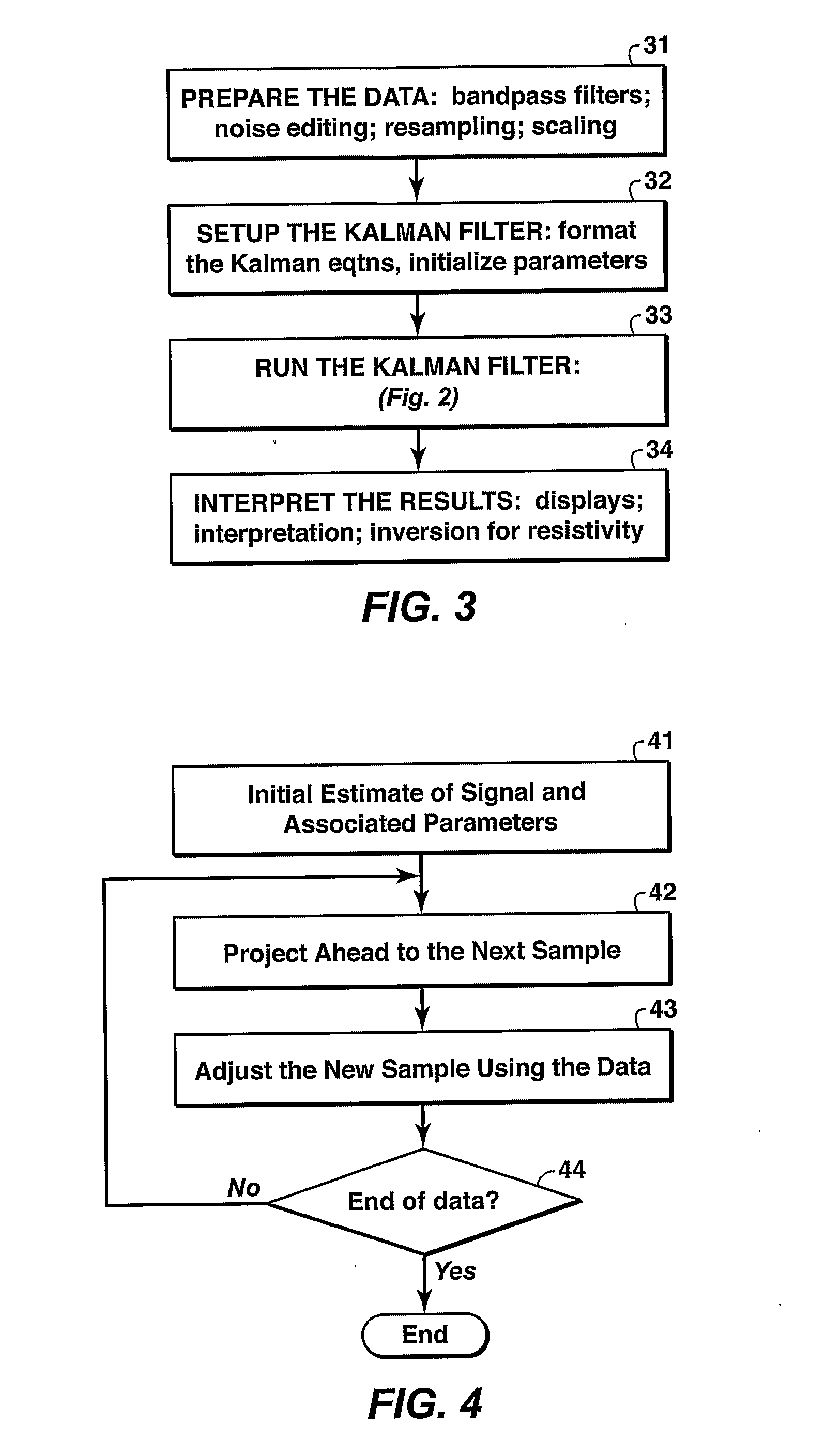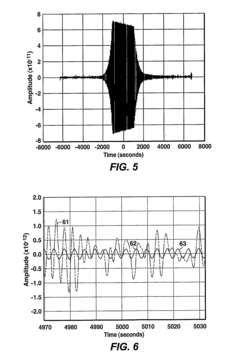Tracking Schumann Resonance Variations: Techniques for Researchers
JUN 24, 20259 MIN READ
Generate Your Research Report Instantly with AI Agent
Patsnap Eureka helps you evaluate technical feasibility & market potential.
Schumann Resonance Background and Research Objectives
The Schumann resonances, discovered by physicist Winfried Otto Schumann in 1952, are a set of spectrum peaks in the extremely low frequency (ELF) portion of the Earth's electromagnetic field spectrum. These resonances occur between the Earth's surface and the ionosphere, creating a natural global electromagnetic resonance phenomenon. The fundamental frequency of Schumann resonances is approximately 7.83 Hz, with subsequent harmonics at approximately 14.3, 20.8, 27.3, and 33.8 Hz.
The study of Schumann resonances has gained significant attention in recent years due to its potential applications in various fields, including atmospheric science, geophysics, and even human health. Researchers have observed that these resonances can be influenced by solar activity, lightning discharges, and other geophysical phenomena, making them valuable indicators of global atmospheric and ionospheric conditions.
The primary objective of tracking Schumann resonance variations is to develop more accurate and reliable techniques for monitoring these subtle changes in the Earth's electromagnetic environment. This research aims to enhance our understanding of the complex interactions between the Earth's surface, atmosphere, and ionosphere, as well as their potential impacts on climate, weather patterns, and biological systems.
Key research goals in this field include improving the sensitivity and accuracy of detection methods, developing more sophisticated data analysis techniques, and establishing a global network of monitoring stations to provide comprehensive, real-time data on Schumann resonance variations. Additionally, researchers seek to correlate these variations with other geophysical and atmospheric phenomena to gain deeper insights into the Earth's electromagnetic dynamics.
Another important aspect of Schumann resonance research is the exploration of its potential applications in various domains. These include earthquake prediction, space weather forecasting, and investigating the possible effects of these resonances on human physiology and cognition. By advancing our understanding of Schumann resonance variations, scientists hope to unlock new avenues for environmental monitoring, natural disaster prediction, and even potential therapeutic applications.
As technology continues to evolve, researchers are also focusing on developing more compact, sensitive, and cost-effective instruments for measuring Schumann resonances. This effort aims to expand the global monitoring network and increase the accessibility of this research to a broader scientific community, ultimately leading to more comprehensive and nuanced insights into the Earth's electromagnetic environment.
The study of Schumann resonances has gained significant attention in recent years due to its potential applications in various fields, including atmospheric science, geophysics, and even human health. Researchers have observed that these resonances can be influenced by solar activity, lightning discharges, and other geophysical phenomena, making them valuable indicators of global atmospheric and ionospheric conditions.
The primary objective of tracking Schumann resonance variations is to develop more accurate and reliable techniques for monitoring these subtle changes in the Earth's electromagnetic environment. This research aims to enhance our understanding of the complex interactions between the Earth's surface, atmosphere, and ionosphere, as well as their potential impacts on climate, weather patterns, and biological systems.
Key research goals in this field include improving the sensitivity and accuracy of detection methods, developing more sophisticated data analysis techniques, and establishing a global network of monitoring stations to provide comprehensive, real-time data on Schumann resonance variations. Additionally, researchers seek to correlate these variations with other geophysical and atmospheric phenomena to gain deeper insights into the Earth's electromagnetic dynamics.
Another important aspect of Schumann resonance research is the exploration of its potential applications in various domains. These include earthquake prediction, space weather forecasting, and investigating the possible effects of these resonances on human physiology and cognition. By advancing our understanding of Schumann resonance variations, scientists hope to unlock new avenues for environmental monitoring, natural disaster prediction, and even potential therapeutic applications.
As technology continues to evolve, researchers are also focusing on developing more compact, sensitive, and cost-effective instruments for measuring Schumann resonances. This effort aims to expand the global monitoring network and increase the accessibility of this research to a broader scientific community, ultimately leading to more comprehensive and nuanced insights into the Earth's electromagnetic environment.
Market Analysis for Schumann Resonance Monitoring Tools
The market for Schumann Resonance monitoring tools has been experiencing steady growth in recent years, driven by increasing interest in Earth's electromagnetic field research and its potential applications. This niche market primarily caters to scientific researchers, academic institutions, and specialized government agencies involved in geophysics, atmospheric science, and space weather studies.
The global market size for Schumann Resonance monitoring equipment is relatively small but growing. Key factors contributing to market expansion include advancements in sensor technology, increasing awareness of the potential links between Schumann Resonances and various natural phenomena, and the rising demand for more accurate and reliable data in climate and space weather research.
The market is segmented based on equipment type, including magnetometers, electric field sensors, and integrated monitoring systems. Magnetometers currently dominate the market due to their versatility and reliability in detecting Schumann Resonances. However, integrated systems that combine multiple sensor types are gaining traction, offering more comprehensive data collection capabilities.
Geographically, North America and Europe lead the market, with the United States and Germany being major hubs for Schumann Resonance research. These regions benefit from well-established research institutions and substantial funding for Earth science programs. The Asia-Pacific region, particularly Japan and China, is emerging as a significant market, driven by increasing investments in atmospheric and space research.
Key market drivers include the growing interest in understanding the Earth-ionosphere cavity and its potential implications for climate change research, space weather forecasting, and even human health studies. The market also benefits from the increasing adoption of Schumann Resonance monitoring in earthquake prediction research and electromagnetic pollution studies.
Challenges facing the market include the high cost of precision equipment, limited awareness outside specialized scientific circles, and the need for extensive expertise to interpret the data accurately. These factors currently restrict market growth and limit the potential user base.
Despite these challenges, the market outlook remains positive. Technological advancements, such as the development of more compact and cost-effective sensors, are expected to drive market growth. Additionally, the increasing integration of artificial intelligence and machine learning techniques in data analysis is likely to enhance the value proposition of Schumann Resonance monitoring tools, potentially expanding their applications beyond traditional research settings.
The global market size for Schumann Resonance monitoring equipment is relatively small but growing. Key factors contributing to market expansion include advancements in sensor technology, increasing awareness of the potential links between Schumann Resonances and various natural phenomena, and the rising demand for more accurate and reliable data in climate and space weather research.
The market is segmented based on equipment type, including magnetometers, electric field sensors, and integrated monitoring systems. Magnetometers currently dominate the market due to their versatility and reliability in detecting Schumann Resonances. However, integrated systems that combine multiple sensor types are gaining traction, offering more comprehensive data collection capabilities.
Geographically, North America and Europe lead the market, with the United States and Germany being major hubs for Schumann Resonance research. These regions benefit from well-established research institutions and substantial funding for Earth science programs. The Asia-Pacific region, particularly Japan and China, is emerging as a significant market, driven by increasing investments in atmospheric and space research.
Key market drivers include the growing interest in understanding the Earth-ionosphere cavity and its potential implications for climate change research, space weather forecasting, and even human health studies. The market also benefits from the increasing adoption of Schumann Resonance monitoring in earthquake prediction research and electromagnetic pollution studies.
Challenges facing the market include the high cost of precision equipment, limited awareness outside specialized scientific circles, and the need for extensive expertise to interpret the data accurately. These factors currently restrict market growth and limit the potential user base.
Despite these challenges, the market outlook remains positive. Technological advancements, such as the development of more compact and cost-effective sensors, are expected to drive market growth. Additionally, the increasing integration of artificial intelligence and machine learning techniques in data analysis is likely to enhance the value proposition of Schumann Resonance monitoring tools, potentially expanding their applications beyond traditional research settings.
Current Challenges in Schumann Resonance Detection
Despite significant advancements in Schumann resonance (SR) detection techniques, researchers still face several challenges in accurately tracking and analyzing these global electromagnetic phenomena. One of the primary obstacles is the low signal-to-noise ratio inherent in SR measurements. The extremely low frequency (ELF) signals of Schumann resonances are often obscured by various sources of electromagnetic interference, including human-made noise from power lines, industrial equipment, and urban environments.
The geomagnetic activity also poses a significant challenge to SR detection. Solar storms and other space weather events can dramatically alter the Earth's magnetic field, affecting the propagation of SR signals and potentially masking or distorting the resonances. This variability makes it difficult to establish consistent baseline measurements and complicates long-term trend analysis.
Another hurdle is the need for highly sensitive and stable instrumentation. SR detection requires specialized ELF receivers and antennas capable of capturing extremely weak signals over extended periods. Maintaining the calibration and stability of these instruments, especially in remote or harsh environments, presents ongoing technical challenges for researchers.
The global nature of Schumann resonances necessitates a network of monitoring stations to capture comprehensive data. However, establishing and maintaining such a network is logistically complex and expensive, limiting the spatial resolution of SR measurements. This constraint hinders our ability to fully understand regional variations and localized effects on SR patterns.
Data processing and interpretation present additional challenges. The complex nature of SR signals, combined with various influencing factors such as day-night asymmetry, seasonal variations, and local weather conditions, requires sophisticated algorithms and models for accurate analysis. Developing robust methods to separate SR signals from background noise and identify subtle variations remains an active area of research.
Furthermore, the interdisciplinary nature of SR research complicates the integration of findings across different fields. Correlating SR data with atmospheric, ionospheric, and even biological phenomena requires collaboration between diverse scientific disciplines, each with its own methodologies and terminologies.
Lastly, the potential effects of climate change on SR patterns introduce new uncertainties. As global temperature and weather patterns shift, their impact on SR characteristics remains poorly understood, necessitating long-term studies and innovative approaches to disentangle climate-related changes from other influencing factors.
The geomagnetic activity also poses a significant challenge to SR detection. Solar storms and other space weather events can dramatically alter the Earth's magnetic field, affecting the propagation of SR signals and potentially masking or distorting the resonances. This variability makes it difficult to establish consistent baseline measurements and complicates long-term trend analysis.
Another hurdle is the need for highly sensitive and stable instrumentation. SR detection requires specialized ELF receivers and antennas capable of capturing extremely weak signals over extended periods. Maintaining the calibration and stability of these instruments, especially in remote or harsh environments, presents ongoing technical challenges for researchers.
The global nature of Schumann resonances necessitates a network of monitoring stations to capture comprehensive data. However, establishing and maintaining such a network is logistically complex and expensive, limiting the spatial resolution of SR measurements. This constraint hinders our ability to fully understand regional variations and localized effects on SR patterns.
Data processing and interpretation present additional challenges. The complex nature of SR signals, combined with various influencing factors such as day-night asymmetry, seasonal variations, and local weather conditions, requires sophisticated algorithms and models for accurate analysis. Developing robust methods to separate SR signals from background noise and identify subtle variations remains an active area of research.
Furthermore, the interdisciplinary nature of SR research complicates the integration of findings across different fields. Correlating SR data with atmospheric, ionospheric, and even biological phenomena requires collaboration between diverse scientific disciplines, each with its own methodologies and terminologies.
Lastly, the potential effects of climate change on SR patterns introduce new uncertainties. As global temperature and weather patterns shift, their impact on SR characteristics remains poorly understood, necessitating long-term studies and innovative approaches to disentangle climate-related changes from other influencing factors.
Existing Methods for Tracking Schumann Resonance
01 Measurement and analysis of Schumann resonance variations
Various devices and methods are developed to measure and analyze variations in Schumann resonances. These systems often include sensors, signal processing units, and data analysis tools to detect and interpret changes in the Earth's electromagnetic field. The analysis of these variations can provide insights into global atmospheric and ionospheric conditions.- Measurement and analysis of Schumann resonance variations: Various devices and methods are developed to measure and analyze variations in Schumann resonances. These systems often include sensors, signal processing units, and data analysis tools to detect and interpret changes in the Earth's electromagnetic field. The analysis of these variations can provide insights into global atmospheric and ionospheric conditions.
- Applications in weather and climate monitoring: Schumann resonance variations are utilized in weather and climate monitoring systems. By analyzing changes in these resonances, researchers can gain information about global temperature changes, lightning activity, and other atmospheric phenomena. This data can be integrated into broader climate models and weather prediction systems.
- Health and wellness applications: Devices and methods are developed to harness Schumann resonance variations for potential health and wellness benefits. These may include therapeutic devices that generate electromagnetic fields mimicking natural Schumann resonances, or systems that monitor an individual's exposure to these resonances for potential health effects.
- Communication and navigation systems: Schumann resonance variations are explored for potential applications in communication and navigation systems. These may include long-range communication methods that utilize the Earth's ionosphere as a waveguide, or navigation systems that use Schumann resonances as a global reference signal.
- Environmental monitoring and earthquake prediction: Research is conducted on the relationship between Schumann resonance variations and seismic activity. Systems are developed to monitor these variations as a potential method for earthquake prediction or as part of broader environmental monitoring networks. These systems often integrate multiple sensors and data analysis techniques to detect subtle changes in the Earth's electromagnetic field.
02 Applications in weather and climate monitoring
Schumann resonance variations are utilized in weather and climate monitoring systems. By analyzing changes in these resonances, researchers can gain information about global temperature changes, lightning activity, and other atmospheric phenomena. This data can be integrated into broader climate models and weather prediction systems.Expand Specific Solutions03 Health and wellness applications
Devices and methods are developed to harness Schumann resonance variations for potential health and wellness benefits. These applications include therapeutic devices, meditation aids, and sleep improvement tools that aim to synchronize human biorhythms with the Earth's natural frequencies.Expand Specific Solutions04 Communication and navigation systems
Schumann resonance variations are explored for potential use in communication and navigation systems. These applications leverage the global nature of these resonances to develop long-range, low-frequency communication methods or to enhance existing navigation technologies.Expand Specific Solutions05 Environmental monitoring and earthquake prediction
Research is conducted on the relationship between Schumann resonance variations and seismic activity. Systems are developed to monitor these variations as part of broader environmental sensing networks, potentially contributing to early warning systems for natural disasters or environmental changes.Expand Specific Solutions
Key Players in Geomagnetic and Atmospheric Research
The field of tracking Schumann Resonance variations is in a nascent stage, with growing interest from both academic and industrial sectors. The market size is relatively small but expanding, driven by applications in geophysics, climate research, and potential health implications. Technologically, it's still evolving, with varying levels of maturity among key players. Companies like Koninklijke Philips NV and Lockheed Martin Corp. are leveraging their expertise in sensing technologies to advance this field. Academic institutions such as The Johns Hopkins University and Fudan University are contributing significant research. The involvement of diverse entities like Exxonmobil Upstream Research Co. and Naval Research Laboratory indicates the multidisciplinary nature and potential wide-ranging applications of this technology.
Hitachi Ltd.
Technical Solution: Hitachi has developed an innovative Schumann resonance tracking system that combines traditional electromagnetic sensors with advanced quantum magnetometers. Their approach utilizes superconducting quantum interference devices (SQUIDs) to achieve unprecedented sensitivity in detecting weak magnetic field variations associated with Schumann resonances. The system incorporates a network of these quantum sensors deployed at strategic locations, coupled with Hitachi's proprietary data fusion and analysis algorithms. This technology enables researchers to detect subtle changes in Schumann resonance patterns with exceptional accuracy and temporal resolution. Additionally, Hitachi's solution includes a cloud-based data storage and processing platform, allowing for collaborative research and big data analytics of long-term Schumann resonance datasets.
Strengths: Extremely high sensitivity due to quantum sensor technology, advanced data analysis capabilities, and collaborative research platform. Weaknesses: High cost of quantum sensor technology, complexity of system operation, and potential challenges in deploying and maintaining sensitive equipment in field conditions.
Baumer Innotec AG
Technical Solution: Baumer Innotec AG has developed a high-precision electromagnetic field sensor system for tracking Schumann resonance variations. Their technology utilizes a combination of advanced magnetometers and sophisticated signal processing algorithms to detect and analyze extremely low-frequency electromagnetic waves. The system incorporates real-time data acquisition and analysis capabilities, allowing researchers to monitor Schumann resonance fluctuations with unprecedented accuracy and temporal resolution. Additionally, Baumer's solution includes adaptive noise cancellation techniques to mitigate interference from man-made electromagnetic sources, ensuring the capture of clean Schumann resonance signals.
Strengths: High sensitivity and precision in detecting Schumann resonances, real-time data processing capabilities, and effective noise cancellation. Weaknesses: Potentially high cost and complexity, may require specialized expertise for operation and maintenance.
Innovative Approaches in Schumann Resonance Analysis
Kalman filter approach to processing electromagnetic data
PatentInactiveUS7536262B2
Innovation
- The method employs a modified Kalman filter algorithm that tracks amplitude and phase changes of periodic electromagnetic signals by using a state vector with components for signal amplitude, quadrature, and their rate of change, incorporating noise and signal correlations, and preprocessing techniques to manage noise bursts and amplitude decay.
Kalman filter approach to processing electormacgnetic data
PatentInactiveUS20070239403A1
Innovation
- A method utilizing a modified Kalman filter algorithm to track amplitude and phase changes of periodic electromagnetic signals, incorporating state and measurement equations, and noise covariance matrices to process data over large windows, thereby improving signal recovery from noise.
Environmental Factors Affecting Measurements
The measurement of Schumann resonances is highly susceptible to various environmental factors, which can significantly impact the accuracy and reliability of data collection. One of the primary environmental influences is electromagnetic interference from both natural and human-made sources. Solar activity, geomagnetic storms, and lightning strikes can all contribute to background noise that may obscure or distort Schumann resonance signals.
Atmospheric conditions play a crucial role in affecting measurements. Changes in temperature, humidity, and air pressure can alter the propagation characteristics of electromagnetic waves in the Earth-ionosphere cavity. Seasonal variations and diurnal cycles also contribute to fluctuations in Schumann resonance measurements, necessitating long-term monitoring to distinguish between environmental effects and genuine resonance variations.
Geographical location is another critical factor. The proximity to industrial areas, power lines, and urban centers can introduce significant anthropogenic noise, potentially masking the subtle Schumann resonance signals. Conversely, measurements taken in remote locations may provide cleaner data but may face challenges in terms of equipment maintenance and power supply.
Geological factors, such as the conductivity of the Earth's crust in the measurement area, can influence the strength and clarity of detected resonances. Areas with high ground conductivity may yield stronger signals, while regions with low conductivity might require more sensitive equipment to detect the resonances effectively.
Weather conditions, particularly thunderstorm activity, can have both positive and negative effects on measurements. While global lightning activity is the primary driver of Schumann resonances, local thunderstorms can overwhelm sensors with strong electromagnetic pulses, potentially leading to data saturation or equipment damage.
To mitigate these environmental challenges, researchers employ various techniques. These include using multiple measurement stations to cross-validate data, implementing sophisticated filtering algorithms to remove known interference patterns, and conducting measurements over extended periods to average out short-term environmental fluctuations. Additionally, the development of more sensitive and noise-resistant sensors continues to improve the ability to isolate Schumann resonance signals from environmental noise.
Understanding and accounting for these environmental factors is crucial for researchers aiming to track Schumann resonance variations accurately. It requires a multidisciplinary approach, combining expertise in atmospheric physics, geophysics, and signal processing to interpret the data correctly and draw meaningful conclusions about the Earth's electromagnetic environment.
Atmospheric conditions play a crucial role in affecting measurements. Changes in temperature, humidity, and air pressure can alter the propagation characteristics of electromagnetic waves in the Earth-ionosphere cavity. Seasonal variations and diurnal cycles also contribute to fluctuations in Schumann resonance measurements, necessitating long-term monitoring to distinguish between environmental effects and genuine resonance variations.
Geographical location is another critical factor. The proximity to industrial areas, power lines, and urban centers can introduce significant anthropogenic noise, potentially masking the subtle Schumann resonance signals. Conversely, measurements taken in remote locations may provide cleaner data but may face challenges in terms of equipment maintenance and power supply.
Geological factors, such as the conductivity of the Earth's crust in the measurement area, can influence the strength and clarity of detected resonances. Areas with high ground conductivity may yield stronger signals, while regions with low conductivity might require more sensitive equipment to detect the resonances effectively.
Weather conditions, particularly thunderstorm activity, can have both positive and negative effects on measurements. While global lightning activity is the primary driver of Schumann resonances, local thunderstorms can overwhelm sensors with strong electromagnetic pulses, potentially leading to data saturation or equipment damage.
To mitigate these environmental challenges, researchers employ various techniques. These include using multiple measurement stations to cross-validate data, implementing sophisticated filtering algorithms to remove known interference patterns, and conducting measurements over extended periods to average out short-term environmental fluctuations. Additionally, the development of more sensitive and noise-resistant sensors continues to improve the ability to isolate Schumann resonance signals from environmental noise.
Understanding and accounting for these environmental factors is crucial for researchers aiming to track Schumann resonance variations accurately. It requires a multidisciplinary approach, combining expertise in atmospheric physics, geophysics, and signal processing to interpret the data correctly and draw meaningful conclusions about the Earth's electromagnetic environment.
Data Interpretation and Visualization Techniques
Data interpretation and visualization techniques play a crucial role in tracking Schumann resonance variations. Researchers employ various methods to extract meaningful insights from the complex electromagnetic data collected. One common approach involves time-frequency analysis, which allows for the examination of resonance patterns over different time scales. Spectrograms, created using short-time Fourier transforms or wavelet analysis, provide a visual representation of frequency components and their intensities over time. These spectrograms enable researchers to identify temporal variations in Schumann resonance frequencies and amplitudes.
Another essential technique is the use of statistical analysis to quantify and characterize resonance variations. Researchers often apply methods such as principal component analysis (PCA) or independent component analysis (ICA) to separate different sources of electromagnetic signals and isolate Schumann resonance components. These techniques help in identifying patterns and correlations within the data, revealing potential relationships between resonance variations and other geophysical phenomena.
Spatial visualization techniques are also employed to map the global distribution of Schumann resonance variations. Researchers use geographic information systems (GIS) to create color-coded maps that display resonance intensity or frequency shifts across different regions. These maps can be animated to show temporal changes, providing insights into the spatial dynamics of Schumann resonances and their potential links to atmospheric and ionospheric conditions.
Advanced machine learning algorithms are increasingly being utilized for data interpretation. Techniques such as neural networks and support vector machines can be trained to recognize patterns in Schumann resonance data, potentially identifying subtle variations that may be difficult to detect through traditional analysis methods. These algorithms can also be used for anomaly detection, helping researchers identify unusual resonance patterns that may be indicative of significant geophysical events.
Real-time visualization tools are becoming more prevalent in Schumann resonance research. Interactive dashboards and data visualization platforms allow researchers to monitor resonance variations in near real-time, facilitating rapid response to significant changes. These tools often incorporate multiple data streams, enabling the simultaneous visualization of Schumann resonance data alongside other relevant atmospheric and geophysical parameters.
To enhance data interpretation, researchers frequently employ cross-correlation techniques to analyze relationships between Schumann resonance variations and other geophysical phenomena. This involves comparing resonance data with measurements of solar activity, geomagnetic indices, or atmospheric parameters to identify potential causal relationships or common driving factors. Visualization of these correlations often utilizes scatter plots, heat maps, or network diagrams to represent complex multi-variable relationships.
Another essential technique is the use of statistical analysis to quantify and characterize resonance variations. Researchers often apply methods such as principal component analysis (PCA) or independent component analysis (ICA) to separate different sources of electromagnetic signals and isolate Schumann resonance components. These techniques help in identifying patterns and correlations within the data, revealing potential relationships between resonance variations and other geophysical phenomena.
Spatial visualization techniques are also employed to map the global distribution of Schumann resonance variations. Researchers use geographic information systems (GIS) to create color-coded maps that display resonance intensity or frequency shifts across different regions. These maps can be animated to show temporal changes, providing insights into the spatial dynamics of Schumann resonances and their potential links to atmospheric and ionospheric conditions.
Advanced machine learning algorithms are increasingly being utilized for data interpretation. Techniques such as neural networks and support vector machines can be trained to recognize patterns in Schumann resonance data, potentially identifying subtle variations that may be difficult to detect through traditional analysis methods. These algorithms can also be used for anomaly detection, helping researchers identify unusual resonance patterns that may be indicative of significant geophysical events.
Real-time visualization tools are becoming more prevalent in Schumann resonance research. Interactive dashboards and data visualization platforms allow researchers to monitor resonance variations in near real-time, facilitating rapid response to significant changes. These tools often incorporate multiple data streams, enabling the simultaneous visualization of Schumann resonance data alongside other relevant atmospheric and geophysical parameters.
To enhance data interpretation, researchers frequently employ cross-correlation techniques to analyze relationships between Schumann resonance variations and other geophysical phenomena. This involves comparing resonance data with measurements of solar activity, geomagnetic indices, or atmospheric parameters to identify potential causal relationships or common driving factors. Visualization of these correlations often utilizes scatter plots, heat maps, or network diagrams to represent complex multi-variable relationships.
Unlock deeper insights with Patsnap Eureka Quick Research — get a full tech report to explore trends and direct your research. Try now!
Generate Your Research Report Instantly with AI Agent
Supercharge your innovation with Patsnap Eureka AI Agent Platform!
